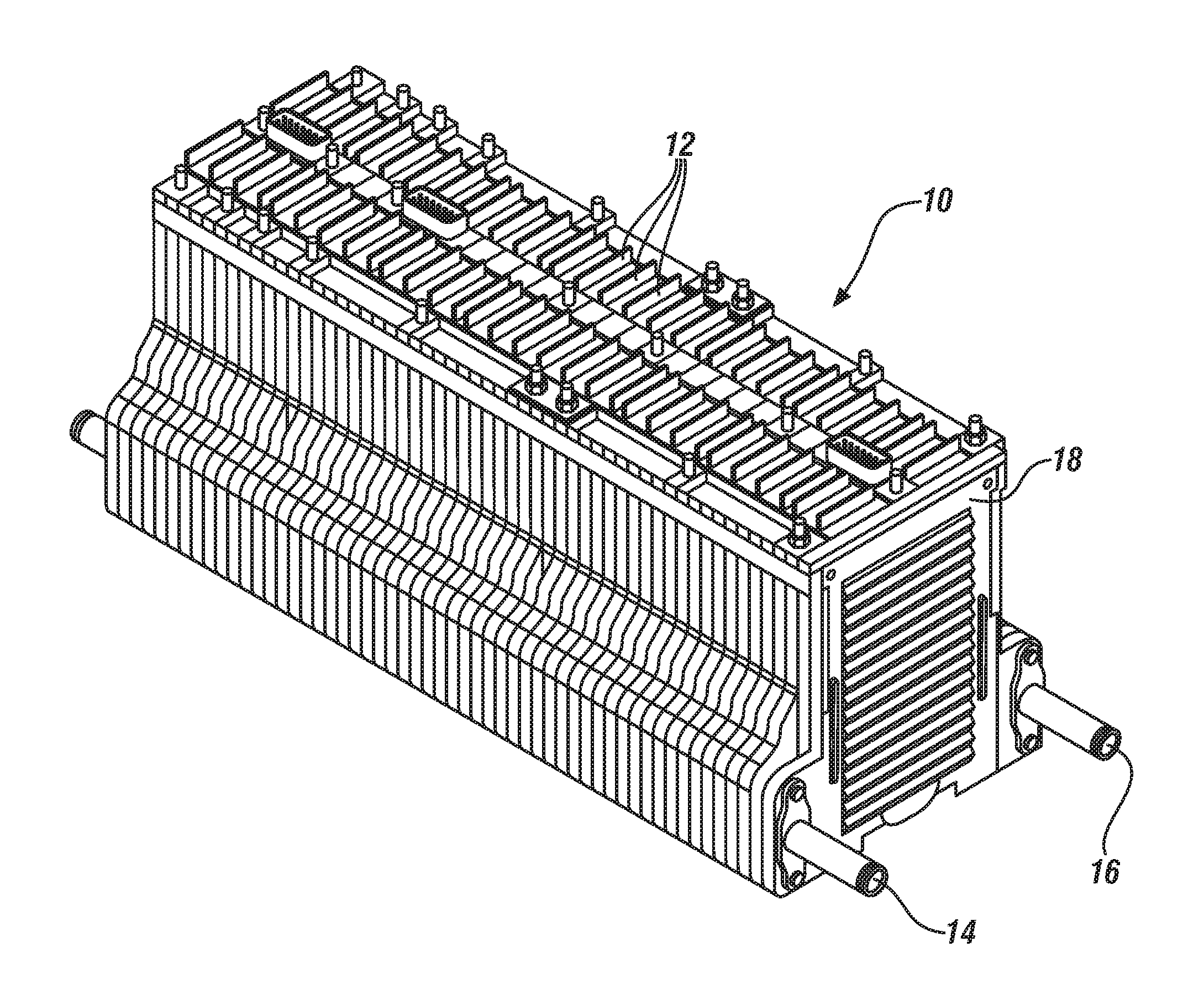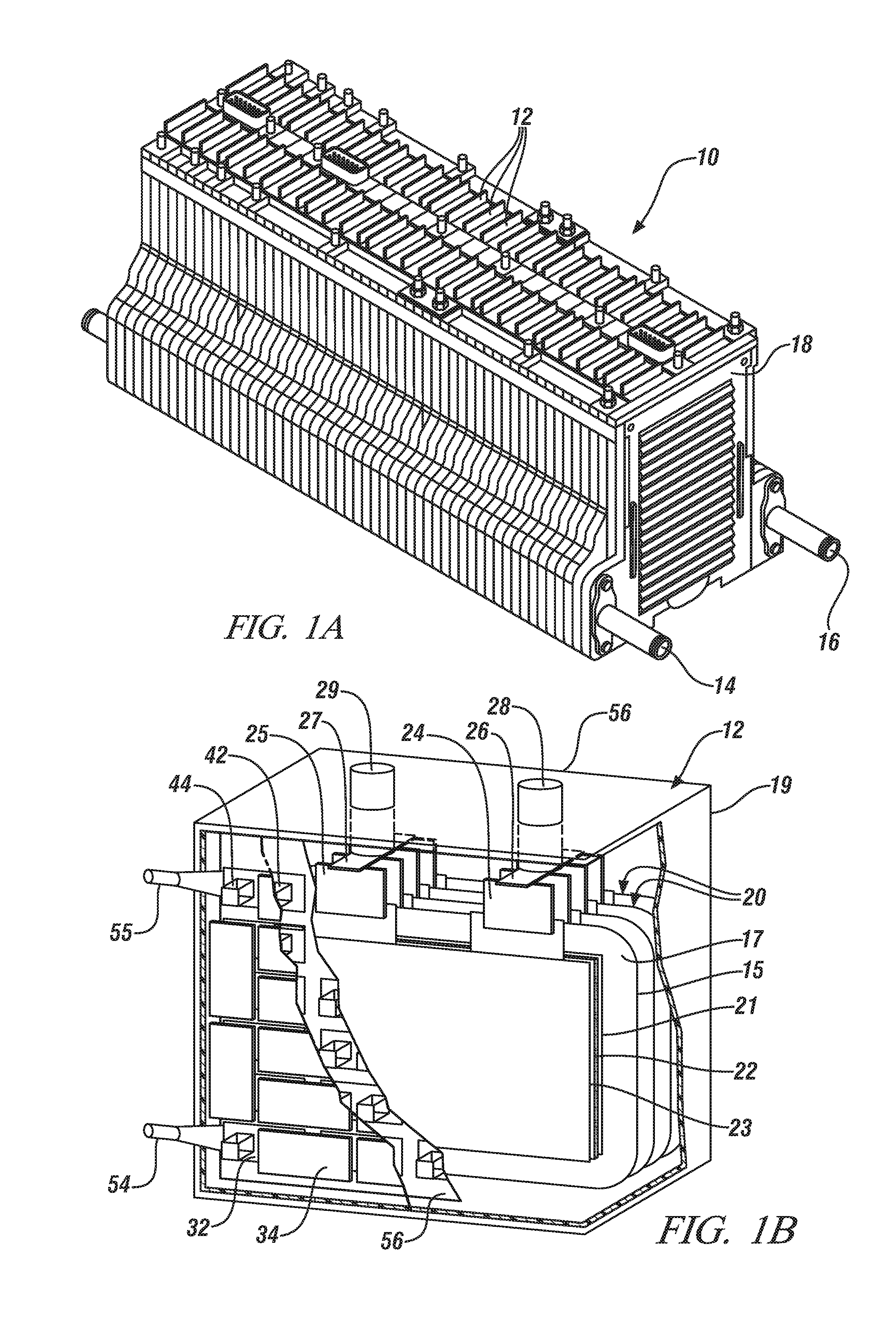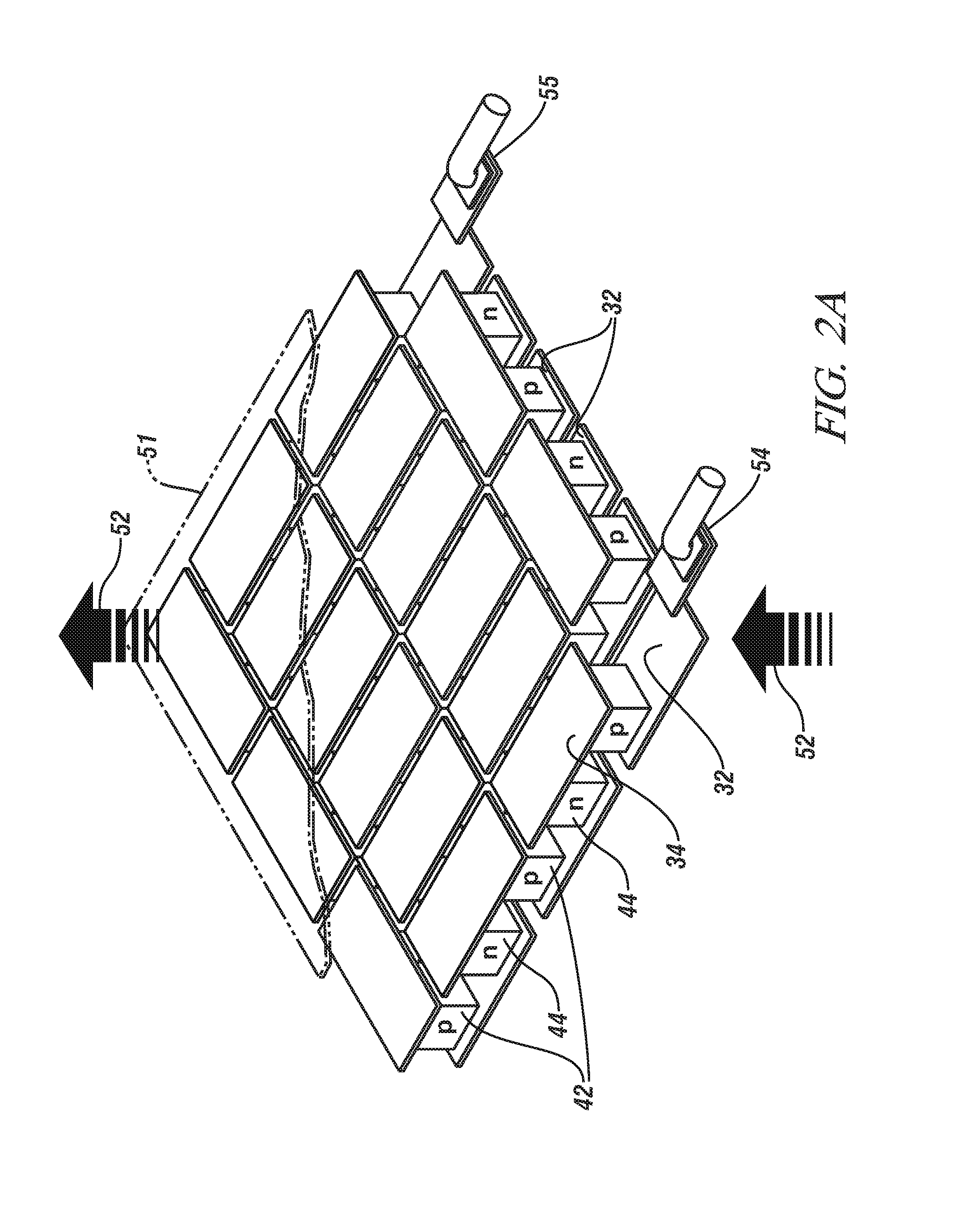Battery with solid state cooling
a battery and solid state technology, applied in the field of cooling batteries, can solve the problems of increasing the temperature of the battery, stressing some of the battery components, reducing the range of the battery, so as to achieve the thermal resistance and associated temperature gradients
- Summary
- Abstract
- Description
- Claims
- Application Information
AI Technical Summary
Benefits of technology
Problems solved by technology
Method used
Image
Examples
Embodiment Construction
[0048]The following description of the embodiment(s) is merely exemplary in nature and is not intended to limit the invention, its application, or uses.
[0049]Although high power batteries, such as Li-ion batteries used in hybrid or electric vehicles, may be exposed to ambient temperatures of from about −30° C. to about 40° C., it is preferred to operate such batteries at between about 25° C. and about 35° C. High temperatures are particularly problematic since temperatures much in excess of this range may reduce battery life and performance.
[0050]To assure operation in this preferred temperature range, most such high power, high voltage batteries incorporate some provision for managing battery temperature, primarily for cooling the battery during operation under conditions of sustained high power demand. Commonly, active cooling is preferred and a suitable fluid may be circulated through and around the battery. The coolant may be water-based with appreciable concentrations of additi...
PUM
| Property | Measurement | Unit |
|---|---|---|
| temperature | aaaaa | aaaaa |
| temperature | aaaaa | aaaaa |
| temperature | aaaaa | aaaaa |
Abstract
Description
Claims
Application Information
 Login to View More
Login to View More - R&D
- Intellectual Property
- Life Sciences
- Materials
- Tech Scout
- Unparalleled Data Quality
- Higher Quality Content
- 60% Fewer Hallucinations
Browse by: Latest US Patents, China's latest patents, Technical Efficacy Thesaurus, Application Domain, Technology Topic, Popular Technical Reports.
© 2025 PatSnap. All rights reserved.Legal|Privacy policy|Modern Slavery Act Transparency Statement|Sitemap|About US| Contact US: help@patsnap.com



